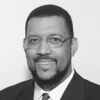Creating a Skilled Workforce
As we explore the challenges of developing a competitive economy for the 21st century, a major factor will be the quantity and quality of our "human capital"-our workforce. Over the last few years, we’ve begun to create new workforce development systems that focus on developing the potential of the entire workforce to meet the needs of business and industry.
We tend to think of the workforce as a monolithic group. However, as we analyze the nature of our workforce, we have at least four distinctive groups: entrant, marginal, incumbent, and elite workers. Each group posseses a unique challenge.
Entrant workers include young people and students transitioning from school to work and maybe entering the workforce for the first time. This group also represents our future workforce. As we examine the issues of quantity and quality of our workforce from the perspective of the entrant workforce, several issues emerge. Over the next few years, the retention and attraction of high school and college graduates will be a significant challenge for central Illinois. Demographic projections indicate our five-county MSA will generally lose young people to areas outside of the region. At the same time, developing the quality of our future workforce will be a significant challenge. Recent research indicates about 700 young people drop out of central Illinois high schools each year. In addition, of those who are enrolled, about 40 percent of our high school students are testing "below standards" in the areas of reading, mathematics, writing, science, and social science. Future challenges for entrant workers include our ability to increase academic performance, reduce drop-out rates, improve graduation rates, develop critical soft skills, transition high school graduates to post-high school education, and attract college graduates who have left the region.
The marginal workforce is defined as workers facing significant barriers to employment and currently out of the workforce or have never been employed. These workers have traditionally been the focus of public employment and training programs. The marginal workforce is also composed of a number of target groups including the economically disadvantaged, welfare recipients, older workers, individuals with disabilities, homeless, and long-term unemployed. Each group and, subsequently, each individual, have barriers that may inhibit them from effective participation in the workforce. The role of government and communities has historically been to assist these individuals to overcome their barriers through education, training and support services, to become self-sufficient and productive working members of the community. This effort is critical to maximize our potential workforce in the face of projected worker shortages in a number of growth occupations.
The largest group of workers is the incumbent workforce. This group, by definition, represents individuals who currently are employed. While these individuals hold a job, there are still significant challenges that impact worker productivity and economic and market competitiveness. The knowledge economy demands shorter production cycles, increased use of technology, changing work processes, and adaptable and creative workers that possess updated technical skills and necessary soft skills. Soft skills include communication, listening, teamwork, critical thinking, and customer service. Recent local surveys tell us employers identify soft skills as a major problem with their incumbent workforce. The changing nature of business also demands that workers have up-to-date technical skills. As a result, ongoing incumbent worker training is necessary for employers to remain competitive in a dynamic business environment.
Our fourth group of workers is the elite workforce. These individuals usually possess extensive education and college degrees, including post-graduate degrees. In a knowledge-based economy, an increasing share of the growth jobs will require higher levels of education and training. As a result, elite workers are the most sought after group. Businesses actively recruit these workers on an ongoing basis. Large businesses have an increasing need for these knowledge workers in areas such as research and development, information technology, high tech manufacturing, engineering, and management. Small businesses also need well educated, technically skilled, adaptable workers that are capable of multi-tasking.
To prosper in the 21st century, communities will have to attract and keep elite workers. Retention of a skilled workforce, prevention of "brain-drain," quality of life, and creating an attractive environment for life, work, and recreation will be major challenges for the economic health of businesses, communities, and regions. IBI

